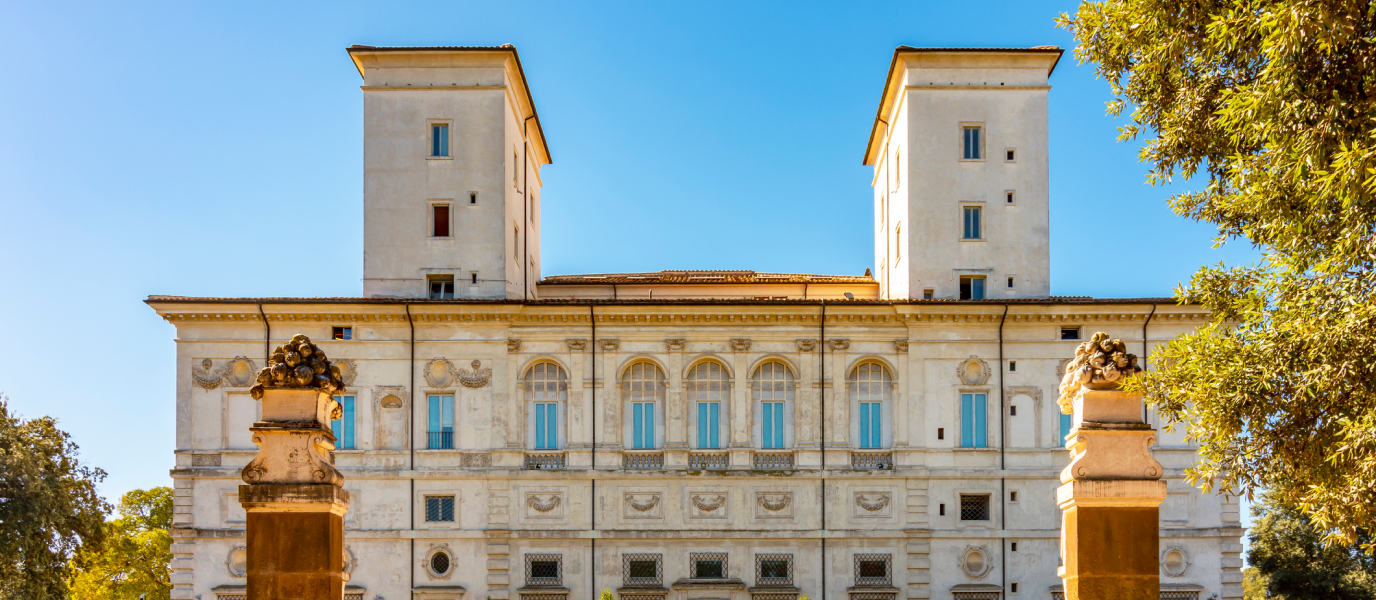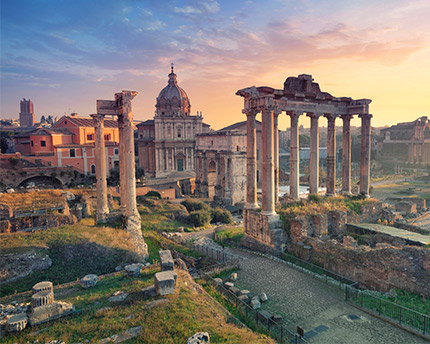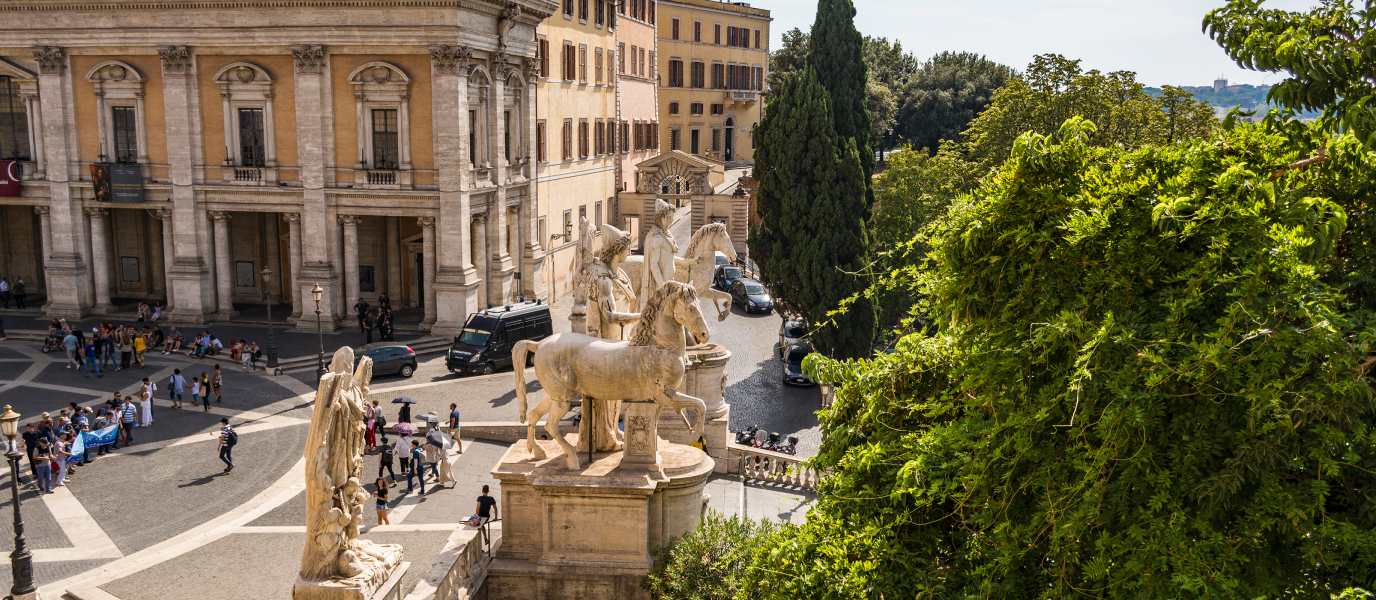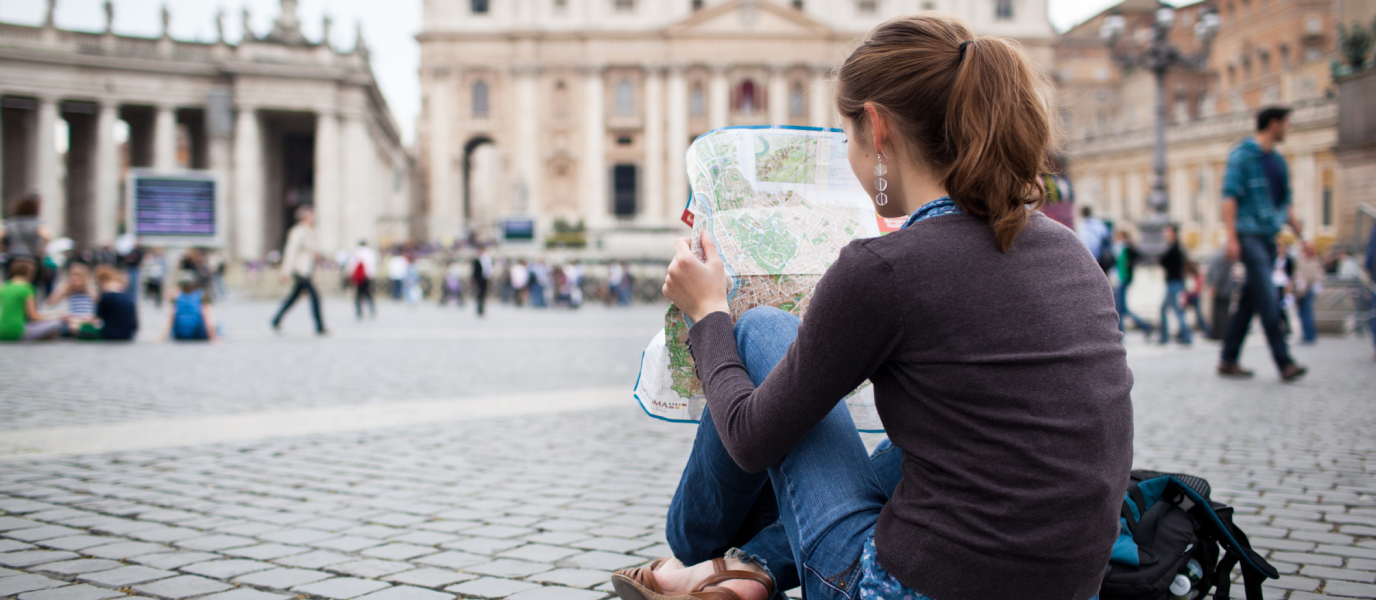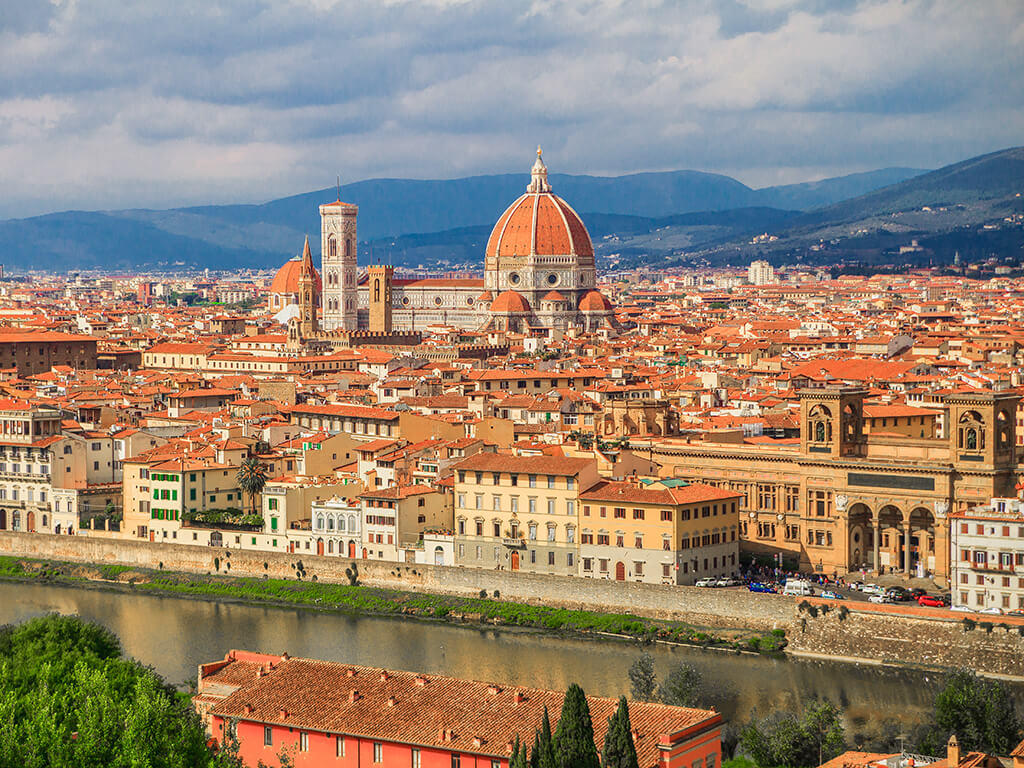Sometimes, the grandiose and austere nature of Rome can be a little overwhelming. A bit of time out away from the hustle and bustle makes for a pleasant change. Whilst it is worth your while putting up with the crowds and the queues in Rome, they can be a little frustrating at times. Everybody knows that if you want to visit famous places such as the Sistine Chapel or the Colosseum, then you need to be patient.
However, there are other smaller jewels in Rome’s crown for you to enjoy on a relaxing day surrounded by nature and art, away from the hustle and bustle of the busy crowds. Villa Borghese is one of Rome’s largest parks. There are gardens, ponds and buildings for you to enjoy. One of the highlights is ‘Galleria Borghese’. It’s a real treasure and well worth putting on your list of places to visit.
Galleria Borghese is a museum inside a palace surrounded by gardens
If you’re out and about near the spectacular Piazza di Spagna, you are just a few steps away from one of nine entrances into Villa Borghese Gardens, which were created as part of Cardinal Scipione Borghese’s plans to turn the entire area into a huge garden.
As nephew of Pope Paul V, the cardinal was incredibly powerful but he was, above all, incredibly keen on art, being a huge admirer of Caravaggio and a strong advocate of Bernini. He commissioned architect Flaminio Ponzio to build a palace in the gardens: ‘Villa Borghese Pinciana’.
Scipione dreamed of having a place that was big enough to house his large collection of art. The main building in the palace is where you will find ‘Galleria Borghese’. The building itself has undergone a great number of changes over the years. In the 18th century, the gardens were also altered to resemble English-style gardens.
Over time, the Borghese family’s heritage and power dwindled until they were forced to sell some works of art to Napoleon in 1800. This is why some of their sculptures are now in the Louvre.
The collection was eventually sold to the Italian government in the early 20th century and the gardens were bought by Rome City Council and turned into a public park. By the late 18th century, ‘Galleria Borghese’ had already become a museum but the government made a number of changes and undertook a huge restoration project in the late 20th century. This is precisely the museum that you can visit today.
Great works of art in ‘Galleria Borghese’: sculptures by Bernini and paintings by the great masters
The museum is really rather charming. Since it is not particularly large, you can see it in a couple of hours. But that doesn’t mean that the works of art on display are not worth seeing. Quite the contrary, in fact.
This amazing collection has its origins in the keen interest of Cardinal Scipione Borghese and the great works of art he collected. In fact, there are rumours that suggest that he even made use of his position to ‘sequester’ certain items such as paintings by Raphael, Titian and Caravaggio.
However, we might add that he certainly had a keen eye for art since he was amongst the first to recognise the great talent of young Bernini. The cardinal was an early advocate and Bernini made some of his most sublime creations for him. Most of them are, in fact, on display in the unique places in ‘Galleria Borghese’ that they were originally designed for. There are two floors and some of the key pieces include the following:
- ‘The Rape of Prosperina’. Bernini’s work is clearly the focal point in the gallery. His taste in sculptural groups reached new levels with this creation and choice of mythological theme. The sculpture depicts the abduction of Prosperina by Hades who intended to take her to the underworld. The figures twist and turn in a dramatic struggle. Focus on the detail of Hades’ fingers digging deep into Prosperina’s thigh as she tries to escape. You will be observing an artistic miracle that brings the marble figures to life.
- ‘Apollo and Daphne’ by Bernini. This is yet another of Bernini’s great pieces of work. Again, he made use of mythology and a great deal of tragedy. The sculpture depicts the moment when Apollo reaches out to try and capture Daphne as she turns into laurel in an attempt to get away. You can walk right around the sculptural group and observe the strain, intensity and passion that it conveys from all angles. Other great works by Bernini in ‘Galleria Borghese’ include the ‘David’ and the ‘Aeneas, Anchises and Ascanius’ sculptures.
- ‘Sacred and profane love’. This oil painting by Titian is clearly one of the most vivid in the museum. A leading advocate of the Venetian School, he used this piece to depict the Neoplatonic concept of beauty in which beauty on earth is a reflection of the divine, a leading theme in Renaissance-era work. Take this opportunity to enjoy the beautiful mix of colours that Titian used.
- ‘Young Woman with Unicorn’. This painting was signed by Raphael in around 1505. The unknown female protagonist is beautifully dressed and holding a unicorn, which is a sign of chastity. It was apparently inspired by Leonardo’s Mona Lisa, painted some years earlier, and you will notice the similarities in the composition of the picture and the fact that her gaze follows you as you observe her from all angles. This is one piece that you really should take a few moments to enjoy.
- ‘David with the Head of Goliath’. Caravaggio was the master of Tenebrism and his style is clear to see in this masterpiece. It is one of his very last pieces of work and the troubled faces and wonderful use of light catches everybody’s attention. You can enjoy a number of Caravaggio’s wonderful pieces in ‘Galleria Borghese’ since the cardinal was a great enthusiast of his work.
The collection also has exceptional pieces by other great artists including ‘Pauline Bonaparte as Venus Victrix’ sculpted by Antonio Canova, ‘Danaë’ by Correggio and ‘Susana and the Elders’ by Rubens, amongst others. The sheer beauty and diversity of the works of art in ‘Galleria Borghese’ is undeniable and, once you have seen the inside, you can also enjoy the gardens, take a boat trip on the lake or visit other local museums such as the National Gallery of Modern Art. Rome is endless beauty.




































































